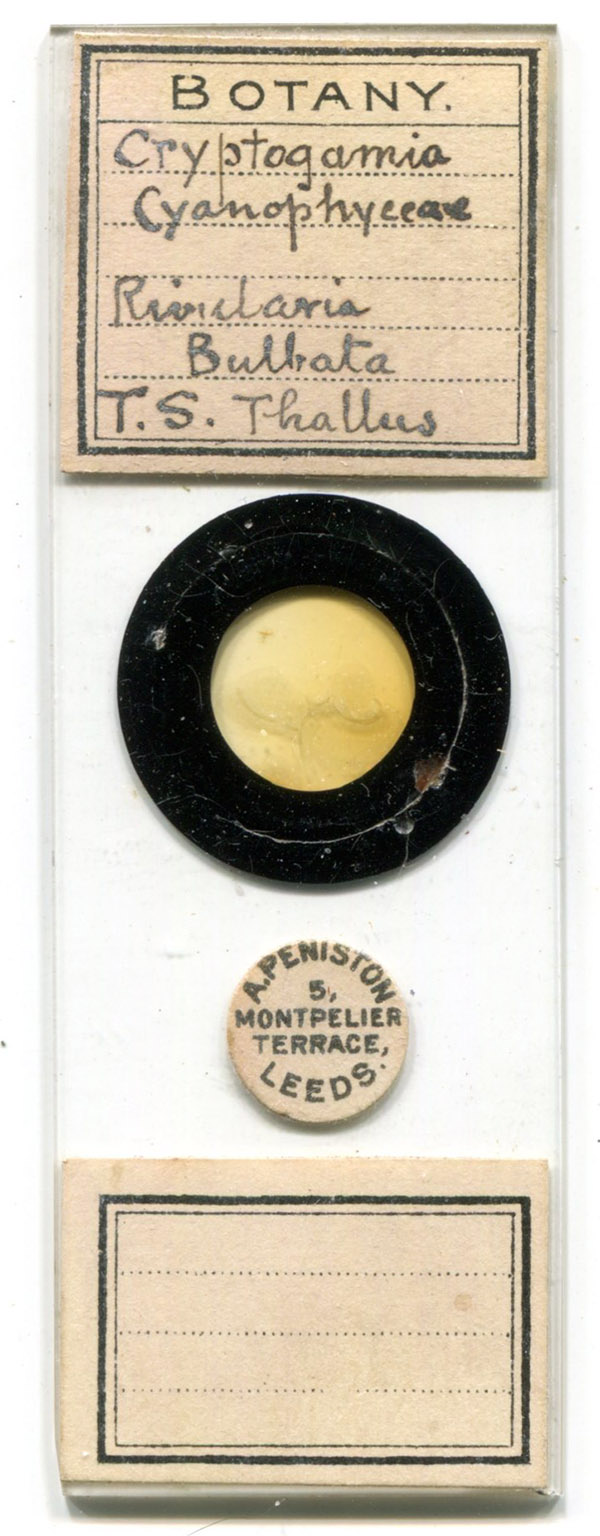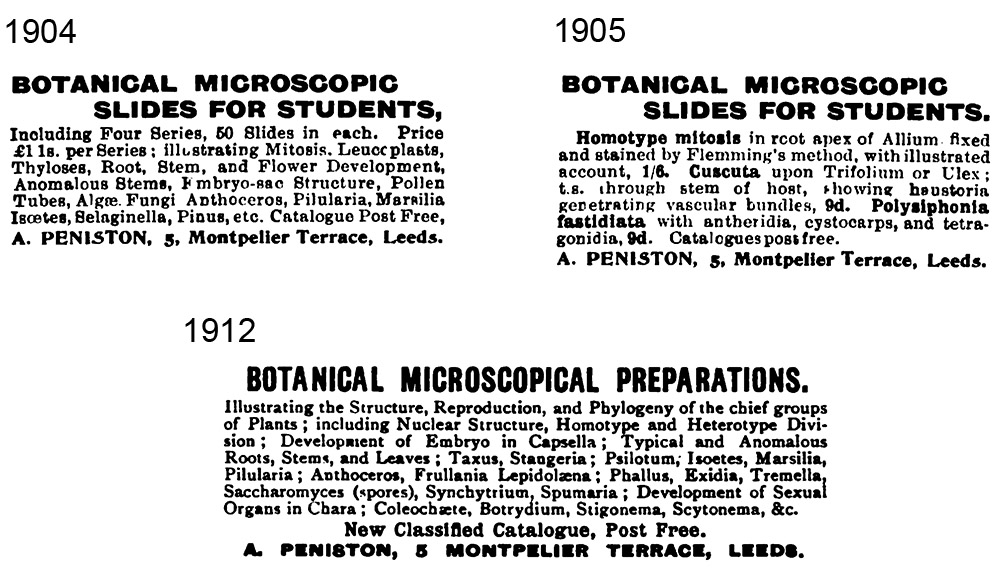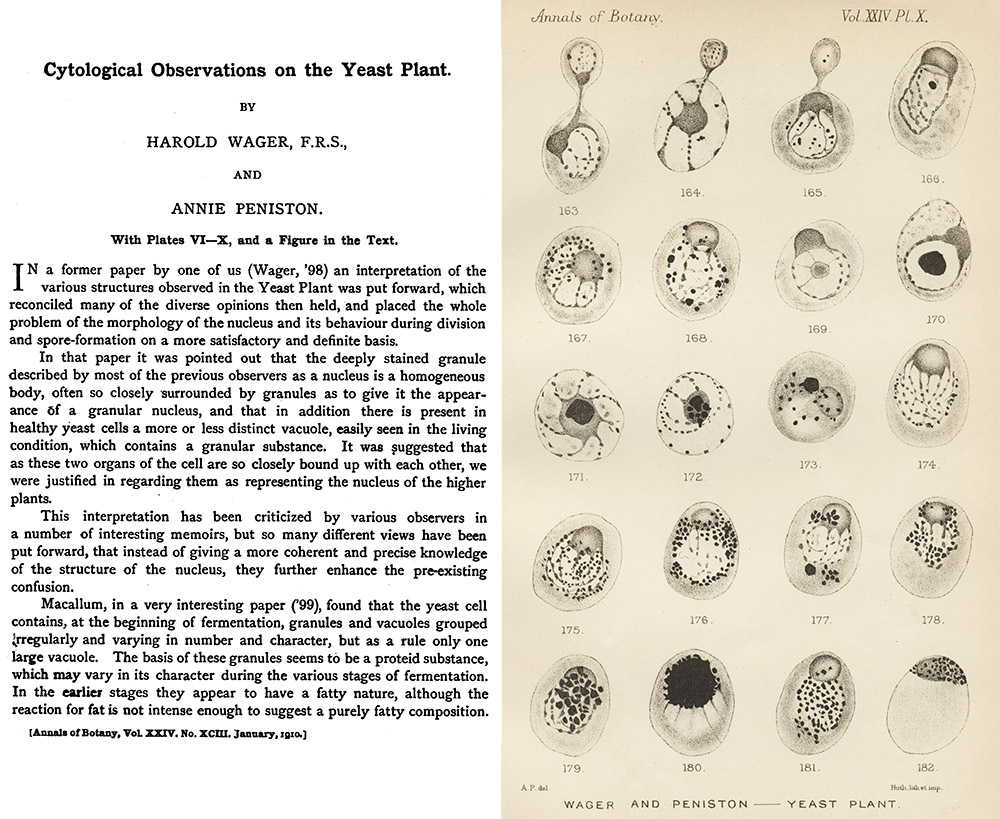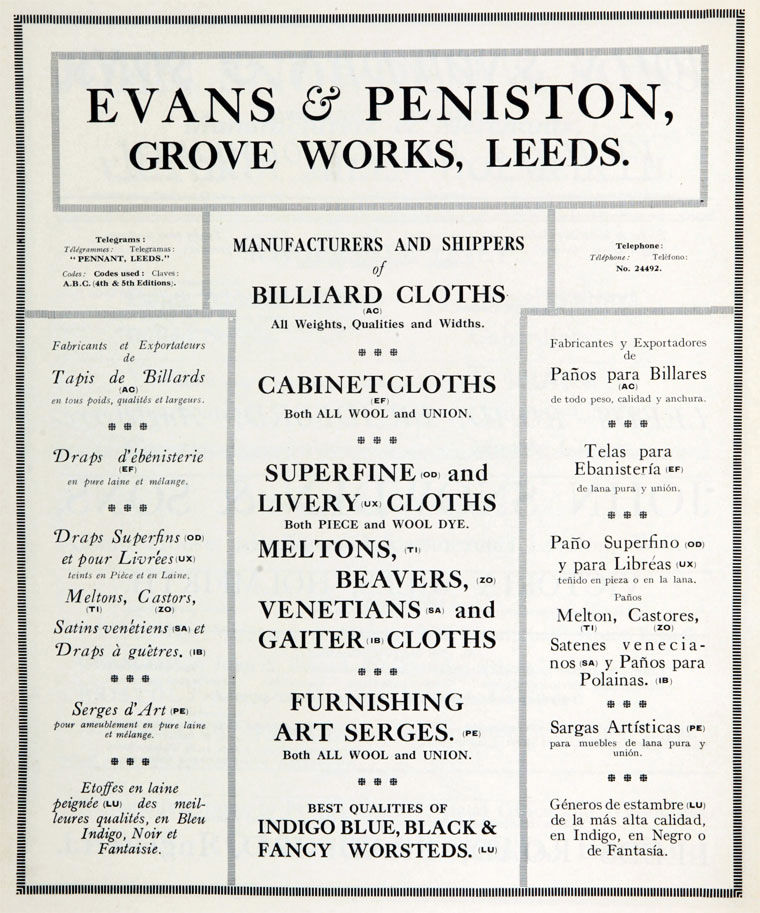
Figure 1. A microscope slide by Annie Peniston. She professionally made botanical slides between 1904 and 1913.
Annie Peniston, 1884 - 1967
by Brian Stevenson
Last updated June, 2021
Working as "A. Peniston", she was a professional microscope slide-maker from 1904 until her marriage in 1913. Peniston specialized in botanical subjects. Her advertisements and catalogues indicate production of hundreds of different slides, including four series of 50 slides each. A contemporary review described her slides as "the work of a botanist and not a mere mounter".
That same review referred to Annie as "Mr. A. Peniston". Her slides, catalogues, and advertisement gave only her first initial. She probably did not do anything to alert potential customers to her sex, that being a time when both science and skilled professions were the domains of men. Indeed, Brian Bracegirdle, in his Microscopical Mounts and Mounters, refers to Peniston as "he".
Yet, Peniston was not shy about revealing her identity when appropriate. In 1910, she co-authored a scientific paper on the structure of yeast cells with Harold Wager, who was then the President of the British Mycological Society and a Fellow of the Royal Society. It is possible that Wager contacted Peniston in response to examining her microscope slides.

Figure 1.
A microscope slide by Annie Peniston. She professionally made botanical slides between 1904 and 1913.

Figure 2.
Advertisements by Annie Peniston from "Knowledge" (1904 and 1905) and from "Nature" (1912).

Figure 3.
Excerpt from the 1911 census record of the Peniston family, noting that 26 year-old Annie worked as a "Microscopist, Botanical", was self-employed, and worked from home.
Annie Peniston was born on September 23, 1884, in Leeds, Yorkshire. She was the eldest of three children of Charles and Annie Peniston. The father was an owner of the Evans and Peniston woolens factories. The family employed domestic servants at the times of the 1889 and 1891 national censuses.
The nature of Annie's early education is not known, although it is evident that her parents were ahead of their time in not only allowing their daughter to gain a substantial education in biology, but also permitting her to operate an independent business.
Annie appears to have begun advertising her microscope slides during 1904 (Figure 2). Her advertisement from December of that year reported "four series, 50 slides each" and a "catalogue".
In August, 1905, an Editor of Knowledge wrote, "Mr. A. Peniston, of 5, Montpelier Terrace, Leeds, has sent me a catalogue of botanical slides which contains a novel feature in that it not only gives the principal features of the slides referred to, but in many cases adds outline descriptive illustrations. Many of the slides are also quite out of the ordinary run, amongst which I observe a slide of oedogonium, showing oogonia and so-called 'dwarf males', early stages in the development of antheridia, developing pollen-tubes, etc. The prices are very moderate and the whole list shows evidence of having been the work of a botanist and not a mere mounter". It was common practice for professional slide-makers to give samples to editors of popular scientific magazines, in hopes of that kind of recommendation.
By 1907, Peniston was also advertising in Nature, an indication that she was targeting serious scientists and educators.
Her work evidently caught the eye of Harold Wager, F.R.S. (1862-1929). Wager also lived in Leeds, where he was an instructor at Yorkshire College / Victoria University / the University of Leeds. In 1898, Wager had published a major paper on structures of brewer's/baker's yeast, Saccharomyces cerevisiae. Possibly as a consequence of familiarity with Annie Peniston's microscope slides, Wager worked with Peniston on a detailed investigation of the yeast nucleus and other structures. Their results were reported to the British Association at their 1909 annual meeting, "Mr. Harold Wager communicated a paper by Miss A. Peniston and himself on the nucleus of the yeast plant. The authors contend that the so-called vacuole of the yeast cell is in reality part of the nuclear apparatus. This vacuole is surrounded by a peripheral chromatin network, which in its turn is connected with a stainable nucleolus. The paper was illustrated by a number of convincing drawings". Their report was published the next year in Annals of Botany (Figure 4). Peniston drew all of the supporting figures, demonstrating that she was both a skillful artist and an expert with the camera lucida.
During that time, Peniston was studying botany at Leeds University. She graduated with a first class Bachelor of Science Honours degree in Botany in 1913.
Annie Peniston's career as a professional slide-maker appears to have ended in 1913, when she married William Oliver Redman King. He was an animal physiologist who had studied at the University of California, Berkeley and the Rockefeller Institute, and was, at the time, an assistant lecturer/demonstrator in the University of Leeds Department of Zoology.
William served in the Royal Army Medical Corps during the First World War, reaching the rank of Lieutenant. Annie and William did not have any children, suggesting that he served out of the country. William died of influenza shortly after the war ended, on February 28, 1919.
Annie then drew on her education to teach zoology at the University of Leeds. From 1919 until 1948, she also served as Warden of the University's Weetwood Hall (for women students).
Annie Peniston died on November 3, 1967 in Lerryn, Cornwall. She left a substantial estate of over £44000.

Figure 4.
The first page and a plate from Wager and Peniston, 1910. Annie Peniston drew all of the figures for the paper.

Figure 5.
A 1922 advertisement from Annie Peniston's family business. Adapted from https://www.gracesguide.co.uk/File:Im192223BS-EPe.jpg
Resources
Bracegirdle, Brian (1998) Microscopical Mounts and Mounters, Quekett Microscopical Club, London, pages 74 and 162, and Plates 29-G and 29-H
England census and other records, accessed through ancestry.com
Knowledge & Illustrated Scientific News (1904) Advertisement from A. Peniston, December issue, page xiv
Knowledge & Illustrated Scientific News (1905) Mr. A. Peniston, August issue, page 213
Knowledge & Illustrated Scientific News (1905) Advertisement from A. Peniston, December issue, page xii
Leeds University Archives (accessed June, 2021) https://explore.library.leeds.ac.uk/special-collections-explore/4001/king_annie_redman
Nature (1907) Advertisements from A. Peniston, multiple issues, Vol. 77
Nature (1909) Botany at the British Association, Vol. 81, page 537
Nature (1912) Advertisement from A. Peniston, Vol. 88, page ci
Probate of the will of William O.R. King (1919) "King William Oliver Redman of 1 Woodsley-terraceLeeds a lieutenant in the Royal Army Medical Corps died 28 February 1919 Administration Wakefield 2 January to Annie King widow. Effects £361 16s 3d", accessed through ancestry.com
Probate of the will of Annie King (1967) "King Annie otherwise Annie Redman of Mixton House Lerryn Lostwithiel Cornwall died 3 November 1967 Probate Wakefield 24 April (1968). £44579", accessed through ancestry.com
Progress, Commerce: Illustrated Yorkshire (1893) Evans & Peniston, London Printing & Engraving, London, page 155
Royal Society Obituary Notices (1929) Harold Wager, 1862-1929
Wager, H. and A. Peniston (1910) Cytological observations on the yeast plant, Annals of Botany, Vol. 24, pages 45-84